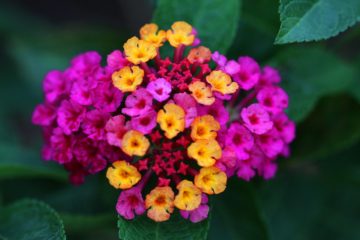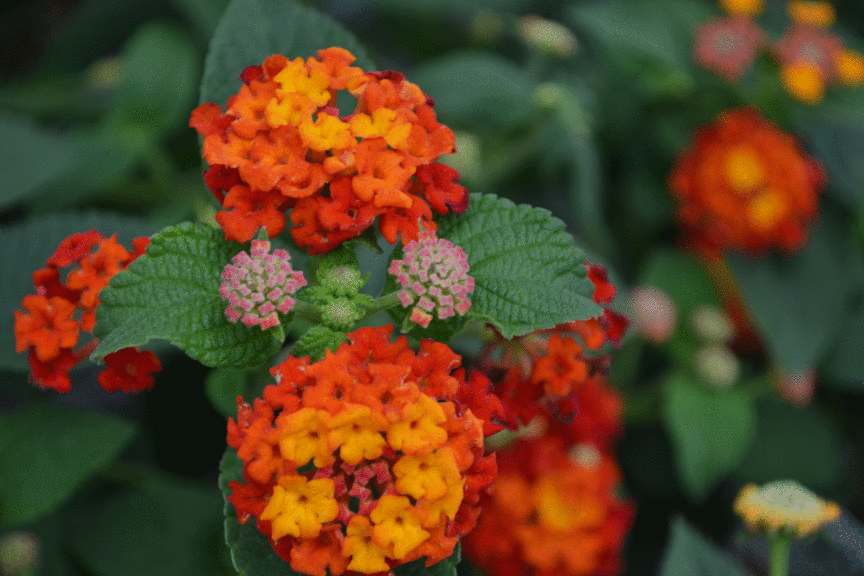If a hot, dry spot in your garden is a problem, then Lantana is the answer to every gardener’s prayers. It requires amazingly little care or maintenance, yet it produces colorful blooms all summer long. This hardworking plant thrives with little moisture in full, hot sun. It’s also easy to grow and extremely attractive to pollinators. It’s common to see numerous butterflies, bees, and hummingbirds swarming around these plants, drinking up the abundant nectar produced in their blooms.
Lantanas belong to the verbena flower family. They grow much taller than the well-known annual box plant verbena, but the small clusters of tubular blooms on this flowering plant look similar. It is an annual plant in our cooler zone, flowering abundantly through the summer. This plant comes in garden varieties with white, yellow, gold, orange, and red flowers; usually the older flowers in each cluster are a different color than the younger ones. Once the blooms have aged through all of their colors, they simply fall off—saving you the time of removing spent blooms, though pruning midsummer can help encourage to new blooms to grow. They can grow two to three feet tall and equally wide over the summer.
Lantanas need full sun and hot weather to give their best performance. They are frost-sensitive, so wait to plant outdoors until the ground has warmed. Space the plants about 18 inches apart to allow for air circulation. Water well for the first few weeks to help get the roots established. When planting in pots or containers, adding a handful of vermiculite or perlite will help enhance the drainage. If the soil remains moist the leaves can develop a mold or mildew.
Lantanas are most often used in containers. They grow well in sunny window boxes, hanging baskets, or patio planters. The plants are likely to produce fewer blooms and be more susceptible to disease if they are in too much shade.
An application of fertilizer or compost on garden beds and a small amount of fertilizer added in pots or hangers will help ensure this plant’s best possible performance. Do not over fertilize as this will result in a weak plant with few blooms.

